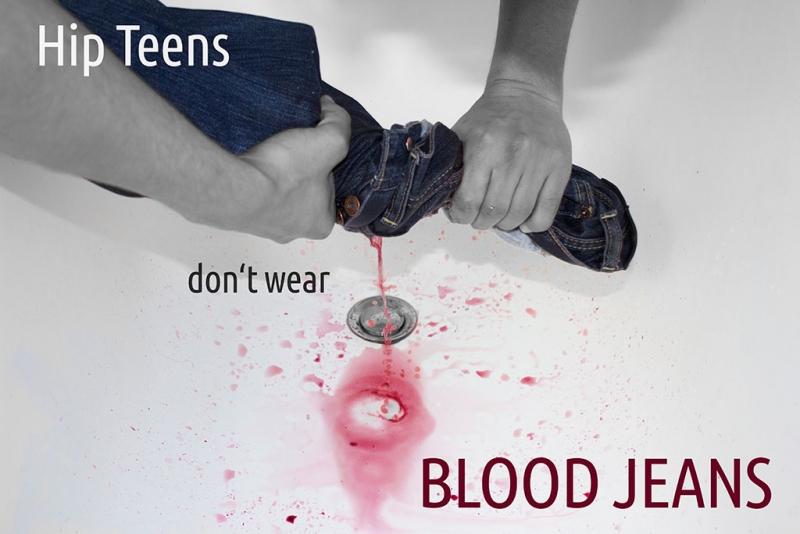Submitted by dilemma on

Why we wear not only jeans, but also the blood of thousands of people.
Even nowadays jeans are produced under poor social and ecological conditions particularly in China and Southeast-Asia. The factories there produce this mass product for nearly all labels like H&M, KIK, and any more except some high-price labels. Also from the ecological point of view the jeans production causes dangerous consequences. The high water consumption and the usage of toxic chemical substances, especially during the production of used looking jeans, cause a horrible ecological balance.
Bangladesh is one of the main countries for jeans production and at the same time one of the poorest countries in the world. According to a statistic from 2013 on statista.com, one pair of jeans for the British supermarket chain Asda costed 22,12 US-Dollar. Only 90 Cent of it were spent for the production, which includes the factory and the salaries of the textile worker. In the year 2013 the collapse of a textile-factory in Savar, Bangladesh costed 1134 people's lifes and inflamed the debate about the dangerous working conditions for the poor textile workers.
Not only the poor conditions of the factories, but also the low salaries of the workers make it possible that a pair of jeans costs what it costs. At the moment the textile worker in Bangladesh earn about 28 Euros per month. According to the human rights organisation War on Want, they often have to work 14 - 16 hours a day, seven days a week. Some of the workers finish their stint at 3am and start again at 7.30am. Women have to endure discrimination and sexual harassment. This horrible circumstances not only apply to the jeans-producing factories, but nearly to all sorts of cloth mass-production in this poor country.
During the production of one kilogram jeans, approximately 200 litres of water are required only to clean them from the toxic chemical substances. Most of the workers are directly exposed to this substances more or less unprotected. The most hazardous substances are used for the production of jeans with the so called used look. This look gets achieved through the use of sand blasting which can result in a deadly silicosis for the worker.
In the bleach process the workers have to inhale substances like Hypochlorid and Kaliumpermanganat. Anyone who watches documentaries like “Der Preis der Blue Jeans” recognizes, that these people mostly look very unhealthy and a lot older than they are because they work in an environment full of toxic and deadly substances. After washing the jeans, the chemically contaminated wastewater mostly ends up directly in the rivers which flow through farmer's fields.
Most labels do not want to comment on this horrible conditions for the workers and the environment. According to them the government is responsible to improve the current situation in the jeans producing countries but it should be also in our own interests to contribute to a better future. For us consumers it is difficult to recognize where and under what circumstances jeans were produced but what we can try is not to be fashion victims of the big labels and ask ourselves: Do we really need as much jeans as they tell us?
We do not even have to live without jeans. There are also labels that produce jeans under fair conditions. For sure they cannot compete with the low prices of the big discounters but do we really want to put up with the health hazards of the textile workers of the factories in Asia?
by Hermann Ritter


